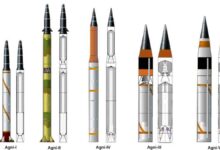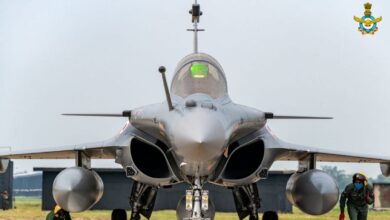The Real Story Behind “Bhuj: The Pride of India”

Hello defence lovers! The Indian Audience had a lot of expectations from Bhuj: The pride of India. But the movie is very far from reality. The producers have just messed up a beautiful plot. But don’t worry, In this article, we are going to tell you the real story of Wing Commander Vijay Karnik, the Bhuj airbase, and the 300 brave women who answered the nation’s call of duty.
Background
On the evening of 3rd December 1971, at 1740 hours, Pakistan launched pre-emptive strikes on eleven Indian Forward air bases on the Western front including Agra which was 480 kilometers inside the Indian territory. Indian forces had very well anticipated these attacks. Taj mahal was camouflaged with twigs and mud to prevent it from glowing like a beacon in the moonlight.
After these strikes, India got the excuse to invade Pakistan officially for which it was preparing since August. On the night of 3-4th December, the biggest bonfire of Karachi Harbour was made by the Indian Navy in Operation Trident. The Bhuj airbase played a crucial role as fighters from here bombed Karachi on a regular basis.
Wing Commander Vijay Karnik
At the time of the 1971 war, Wing Commander Vijay Karnik was the Commanding officer of the Bhuj Airbase. He was Squadron Leader Back then. He hailed from Nagpur city. He joined the Indian Airforce in 1962 at an age of 23. He was the youngest base commander at the time of war. He had only 9 years of experience, whereas every other base commander had 15- 20 years of experience.
The Bombing of Bhuj
Right from the first pre-emptive strike of Pakistan on 3rd December, the Bhuj Airbase was being attacked by constant Air raids. However, the Pakistan Air force wasn’t able to cause significant damage to it. The contractors, laborers, and our military engineers quickly repaired the minor damages to keep the airbase operational.
Pakistan’s ambition was to capture Kutch. During the 1965 war, Pakistani tanks had crossed the Rann of Kutch and they were familiar with the terrain. But as long as the Air cover from Bhuj Airbase was available, the Pakistanis could not move their tanks into Kutch as those tanks would be sitting ducks for IAF fighters. Thus they planned a concentrated attack on the Bhuj Airbase.
On the night of the 8th December, Pakistani fighters dropped 14 napalm bombs on the airstrip making at least 8 big craters. Thus the runway became non-operational. The same day the base was supposed to get a squadron of Sukhoi Su-7 from Punjab.
Repairing The Runway
This time the damage was significant. But all the contractors and laborers had run away to save their lives. All other companies were preoccupied with other crucial work. The Sappers had a severe shortage of manpower to repair the runway. Now Squadron Leader Vijay Karnik made a genius move and convinced the women from the neighboring village Madhapur to help them to repair the runway.
The people of Madhapur had a social custom to do construction work. Initially, 30 women came, then 100, and after that entire village came. These women were given instructions about sirens signifying air raids and how to take shelter during these raids. All these women wore green saries to camouflage themselves while working. 300 women along with 50 IAF personals and 60 Indian Amry troops repaired the runway in less than 72 hours. Now Bhuj airbase was again ready to send fighters to set Pakistan on fire.
Conclusion
So this was the real of Bhuj, Wing commander Vijay Karnik and the brave 300 women of Madhapur who answered the nation’s call of duty. Filmmakers must consult military historians before making such misleading and illogical movies like “Bhuj: The Pride of India”. If a person couldn’t respect the sacrifices and efforts of our brave soldiers, then he/She must refrain from at least dishonoring them.













